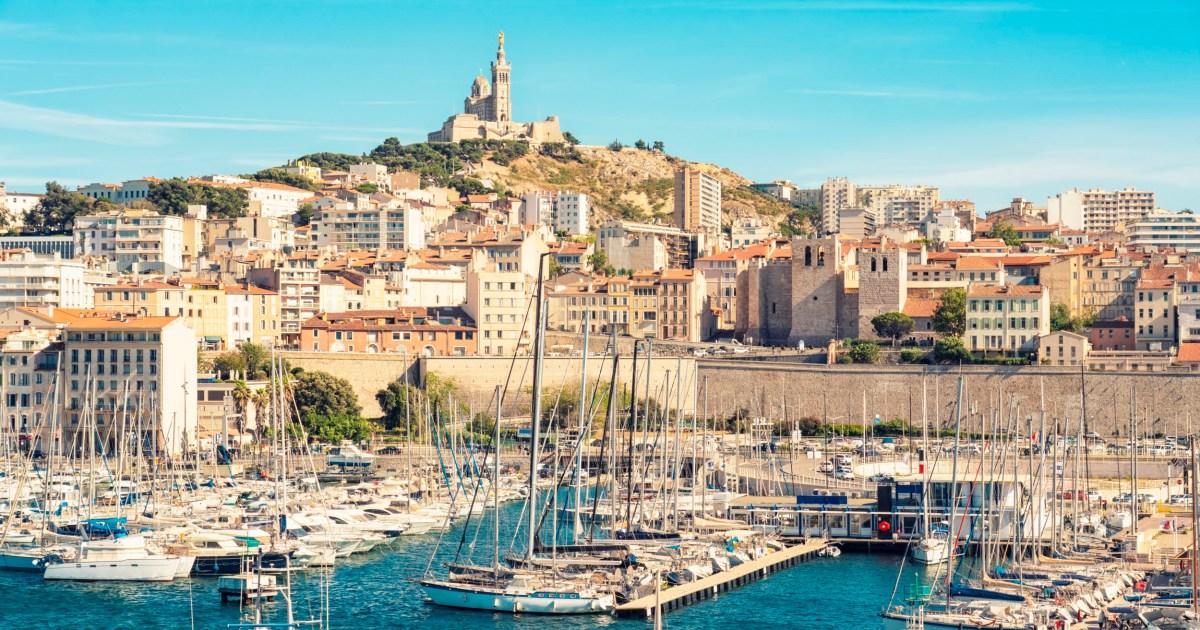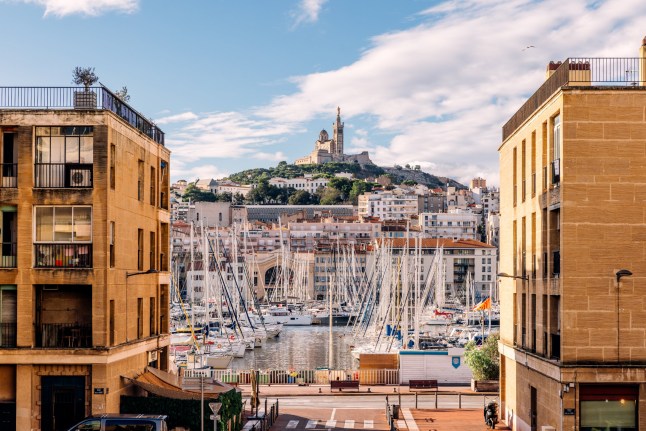
The basilica of Notre-Dame de la Garde watches over France’s oldest city, which is having a renaissance (Picture: Getty Images)
If your algorithmic gods are anything like mine, you’ll know that Marseille was the place to be in Europe this summer.
A brilliant mix of grit and grandeur, this multicultural port city in the South of France combines the creativity of Berlin and anarcho-vibe of Athens with Miami’s cerulean water and vibrant immigrant mix (not to mention the Parisian influence of extravagant architecture and excellent bread).
For Londoners, it might be easier to envisage Dalston or Hackney Wick in the sun.
Marseille is the oldest city in France, founded by Greek settlers around 2,600 years ago, but only since the pandemic has it had a renaissance.
‘You cannot imagine how many people moved down here from Paris during Covid,’ Gaëlle, a mother-of-two who grew up in Marseille, tells me. ‘It was like a bomb went off, there were so many.’
Drawn by affordable rent and the spoils of the Med, digital nomads and energetic young chefs pulled the spotlight back onto the country’s second-largest city.
Sign up to The Getaway newsletter
Fuel your wanderlust with our curated newsletter of travel deals, guides and inspiration. Sign up here.
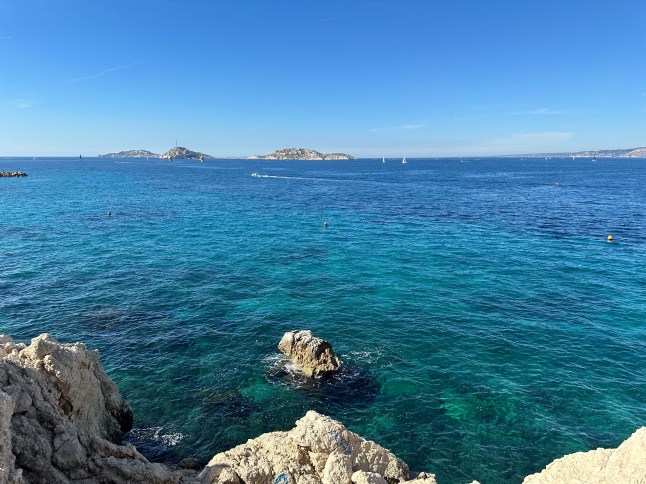
A view like this and over 300 days of glorious sunshine each year… difficult not to be tempted to move to Marseille (Picture: Alice Murphy)
The diverse population, today comprised of Parisian blow-ins and the diaspora from former French colonies, has made it a treasure trove for second-hand clothes — but more on that later.
A changing reputation
When I visited in mid-October, Marseille had an unmistakably youthful feel and little sign of the reputation it was once notorious for.
Headlines of the horrors in France’s ‘most dangerous city’, ranked as such by several crime indexes, have long slapped a crime capital label onto the Provence port.
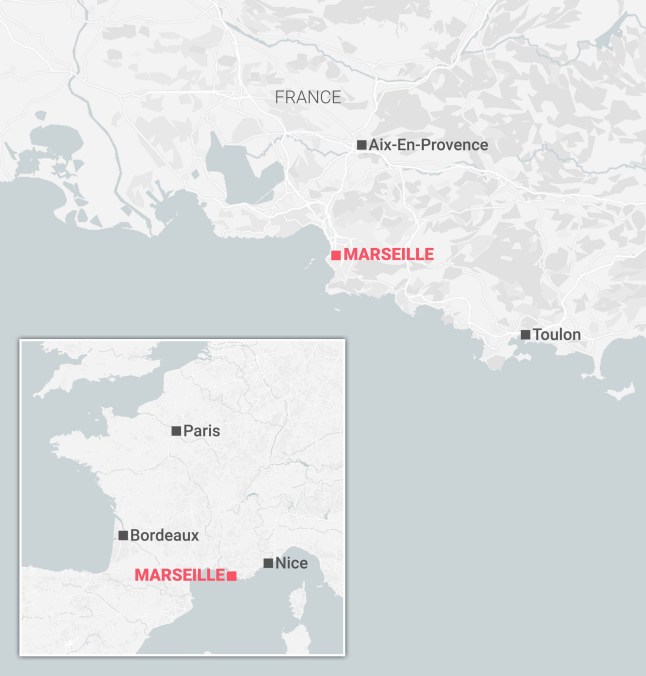
Marseille, France’s second-largest city, is also its oldest, founded by Greek settlers on the Mediterranean around 2,600 years ago (Picture: Metro)
Sure, there are drugs and gang violence, as there is in most big cities, and a quick Google advised me to avoid housing estates in the northern quarters.
But scary statistics promising the sketchiest encounters in Europe failed to materialise.
In fact, my boyfriend left his wallet in a shop and only realised his mistake hours later. A quick call confirmed the wallet was in safe hands behind the counter, and it was returned with cards and euros intact.
Could you be sure of the same in Piccadilly Circus?
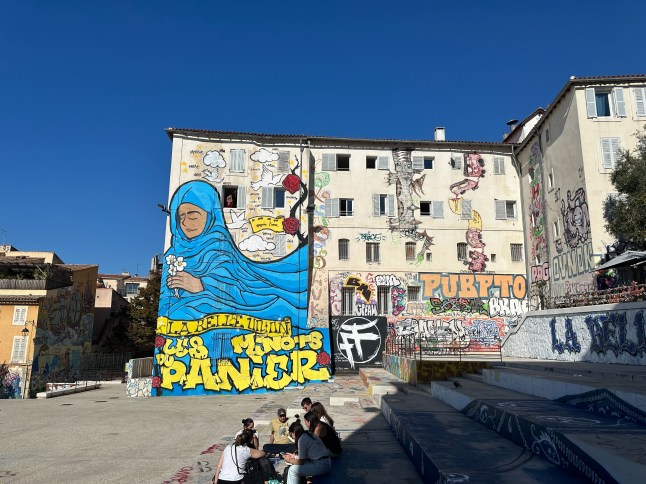
Urban art in the heart of Marseille’s tourist centre (Picture: Alice Murphy)
Marseille also escapes the snooty French stereotype. Smiling faces and friendly chat were forthcoming everywhere we went, and my new friend Gaëlle (who I got talking to on a boat) summed it up nicely.
‘I’ve lived in Paris and London, and I don’t know, it’s just different here. You take the bus, you sit for a coffee, and always there is someone next to you who wants to talk. It’s special.’
What to see, do and explore in Marseille
We timed our visit for shoulder season, in part to dodge the holiday hordes and the searing heat, but also to see if Europe’s trendy new darling has much to offer when tans start to fade.
And while summer might be the traditional time to visit, when the city’s corniche and urban beaches are sizzling with events, I can confirm that Marseille, with its mix of art, music, and food, is a draw at any time of year.
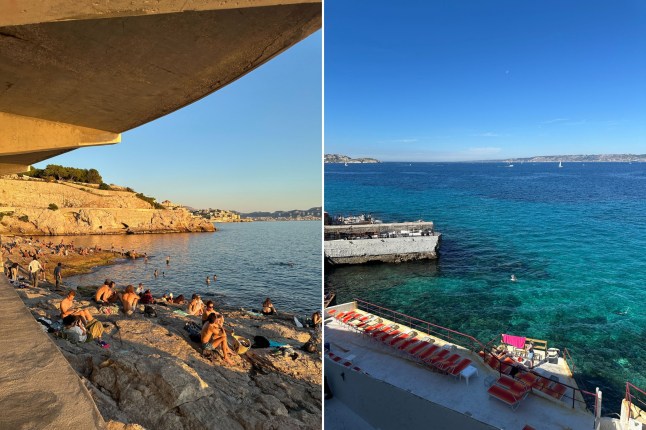
Locals are quick to clarify that there are no beaches in Marseille (only urban, man-made ones), but there are plenty of scenic spots for a dip (Picture: Alice Murphy)
It’s a message that locals are eager for tourists to hear.
‘Our reputation has changed, especially since we hosted the Rugby World Cup [in 2023] and the sailing segment of the Olympics [in 2024],’ Anne Dallaporta, from Marseille’s Tourism Board, tells me over a lunch of octopus carpaccio, a local specialty.
‘We’ve proved it’s not a dangerous place, but now the biggest problem we face is seasonality. We have too many people coming in the summer, and we need them to come in winter, too.’
I see no reason not to. From October onwards, the weather becomes more manageable, with intense temperatures dropping to a pleasant 20°C – 25°C and the sea remaining warm enough for swimming.
By November, the days may be shorter, but the glow of the autumn sun lingers on.
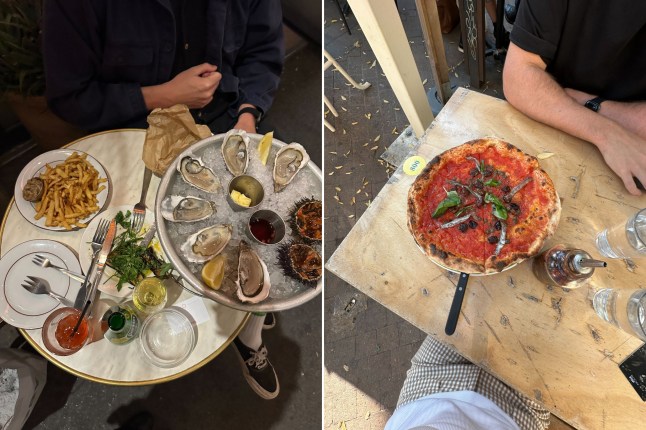
It’s hard to find a bad meal in Marseille; two standouts were oysters at L’écaillerie and classic Napoli pizza – no cheese – at Tripletta (Picture: Alice Murphy)
For culture vultures, there is a fascinating portfolio of museums (MuCEM for architecture and sea views, open-air MAUMA for emerging street art and La Cité Radieuse, a visionary 337-apartment tower that needs to be seen to be believed).
For nature lovers, there is Calanques National Park and dozens of spots to swim and picnic with locals, almost year-round (I recommend the rocks at Port de Malmousque and Vallon des Auffes).
For foodies, there is a smorgasbord of restaurants serving the best of what, amongst others, Senegal, Ghana, Tunisia, and Morocco have to offer.
Highlights for me include L’ABC (for sandwiches), L’écaillerie (for oysters), Chez Yassine (for cheap and cheerful North African delights), and Ile Degaby, an island restaurant in a glorious location only accessible by boat (though also only open from May to October).
A good reason to visit
I’d watched a few TikToks about Marseille’s thrifting scene before my trip, but I wasn’t prepared for what is, in my opinion, the best second-hand clothing scene in Europe.
Digger Club, Out of Space, Kitsch and Bobby (personal favourite) are just some of the vintage shops that earn the city its fashion credentials.
All are beautifully curated, but more importantly, all are remarkably affordable.
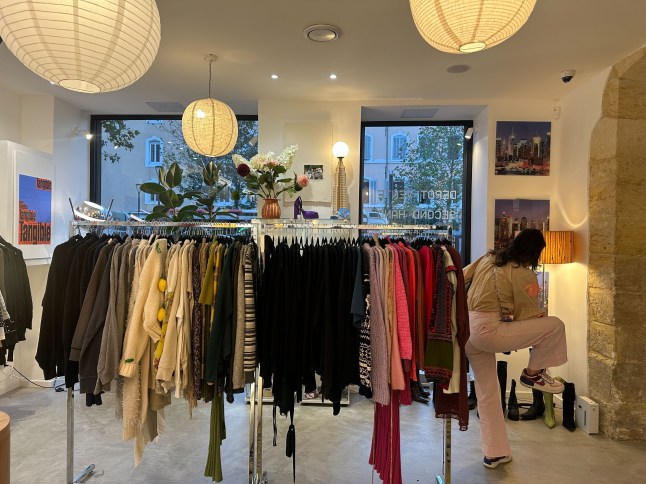
Bobby, probably the best vintage and consignment store I’ve found outside Japan (Picture: Alice Murphy)
I found immaculately preserved pieces, double-lined skirts and hand-embroidered shirts (made in France) for as little as €25.
You’re as likely to pick up a pair of pre-loved Prada mules as you are an unlabelled leather jacket, and everything is in mint condition.
For €100, I bought a pristine pure wool Acne jumper (RRP approx. €850), and I know I’ll be wearing it for years.
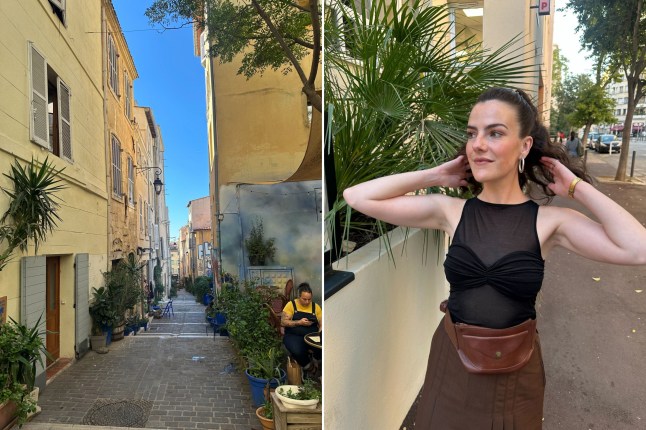
Wandering the streets in a second-hand skirt (€25) and belt bag (€20) I picked up the day before (Picture: Alice Murphy)
Paris might be the obvious choice for a shopping spree, but Marseille, from what I saw at least, is the smarter one.
Especially now, as a growing number of travellers are planning holidays around second-hand shopping.
Recent research from tourism analysts Bókun shows market and shopping tours have become the second most popular travel activity, only behind traditional sightseeing.
The trend, known as ‘thrift-tripping’, covers everything from vintage consignment boutiques to flea markets and charity shops.
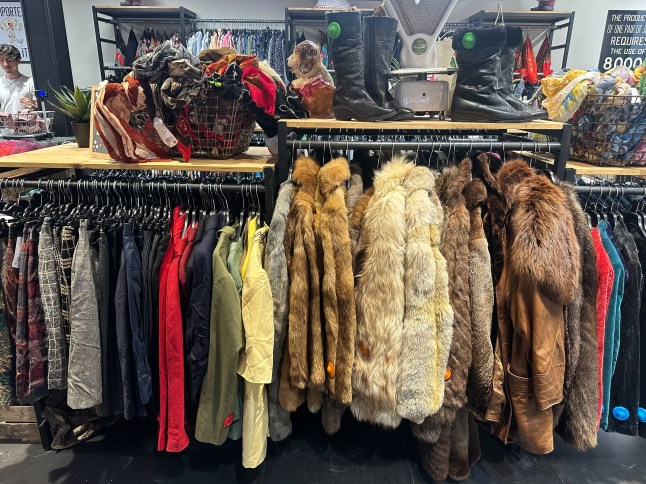
Humana, Europe’s best second-hand chain, is particularly popular in Scandinavia, but Marseille’s stores are just as good (Picture: Alice Murphy)
Google search data reveals demand for market tours increased 61% over the past year, and searches for ‘Italy vintage markets’ and ‘thrifting in Bangkok’ jumped 1,000% between August and September alone, according to Bókun.
The shift coincides with broader sustainability concerns in tourism, with 93% of travellers saying they are keen to make more sustainable choices, according to a survey by Booking.com.
As trends go, it’s a welcome one; 85% of all textiles go to the dump each year, and less than 1% of material used to produce clothing is recycled into new clothing, resulting in over $100 billion in material value loss.
So really, all told, there’s never been a better time to visit Marseille. Go in winter before everyone else does (and bring an empty suitcase).
Getting there from the UK
You can get to Marseille by flying into Marseille Provence Airport (MRS) and taking a shuttle, bus, or taxi to the city centre. Ryanair flies direct from £22 one-way in October.
Alternatively, you can take a train to the central Gare de Marseille-Saint-Charles station, which is convenient for travel within Europe and from other major French cities such as Paris.
Alice Murphy was a guest of the Marseille Tourism Board.
Arrow
MORE: I left the UK to live on an all-inclusive cruise ship for £52 a day
Arrow
MORE: New European trains coming in 2026 and beyond — from ‘Tube for Europe’ to a Eurostar rival
Arrow
MORE: A 500-mile road trip in an EV — here’s what went right (and wrong)
Comments
Add Metro as a Preferred Source on Google
Add as preferred source
The Getaway
Fuel your wanderlust with our curated newsletter of travel deals, guides and inspiration.
